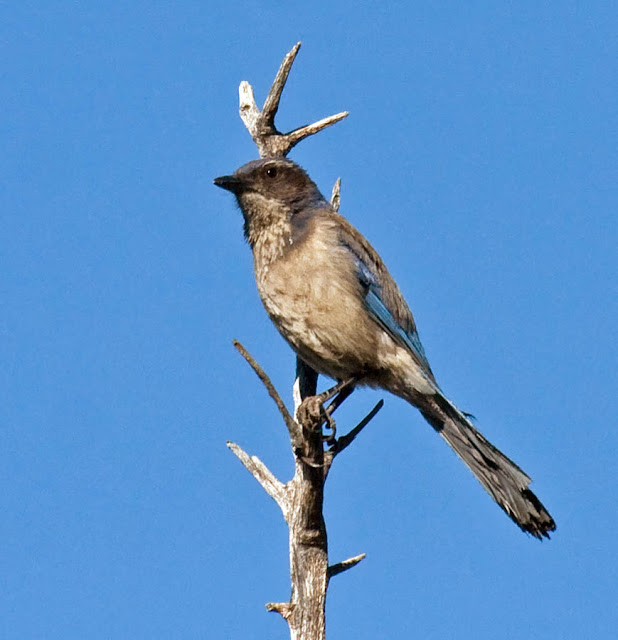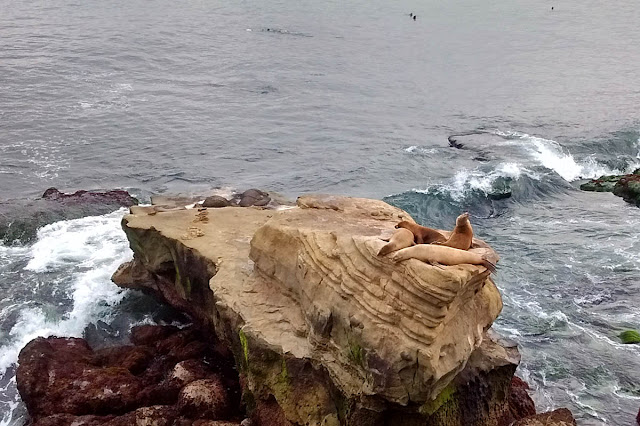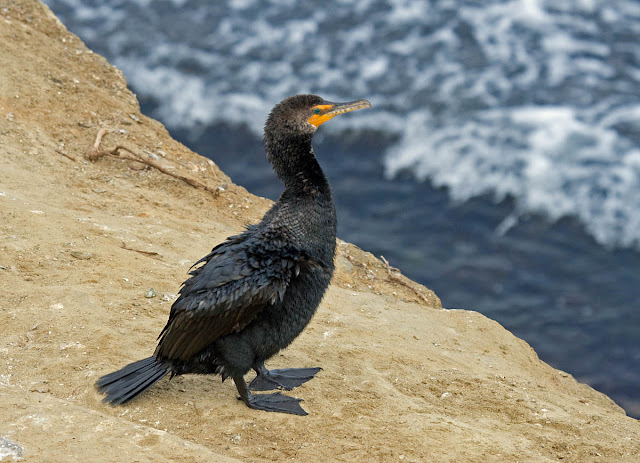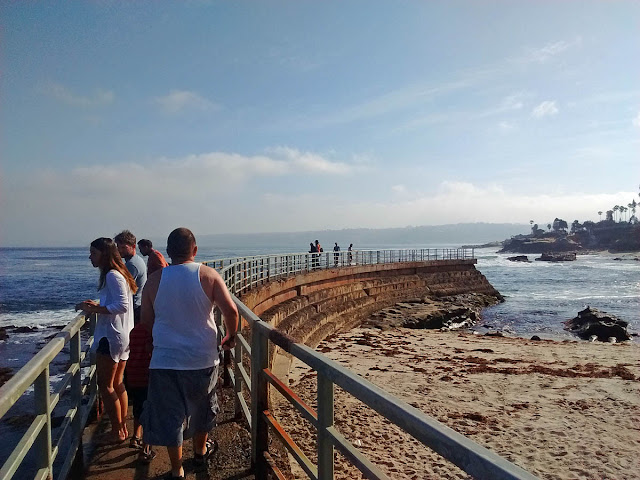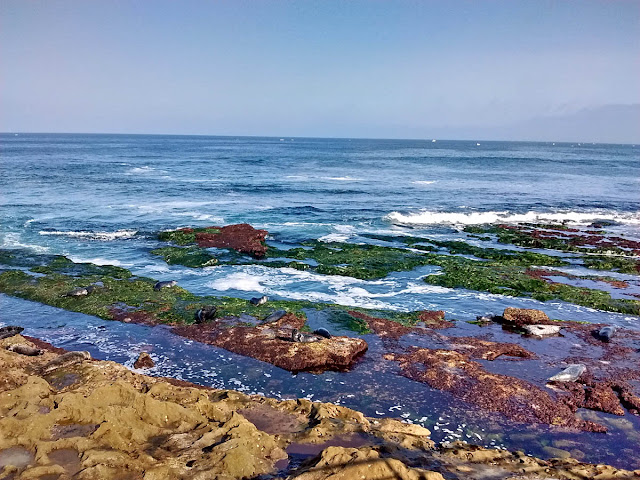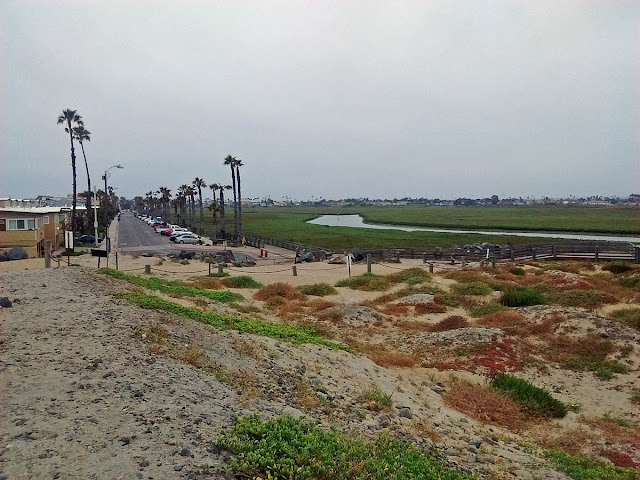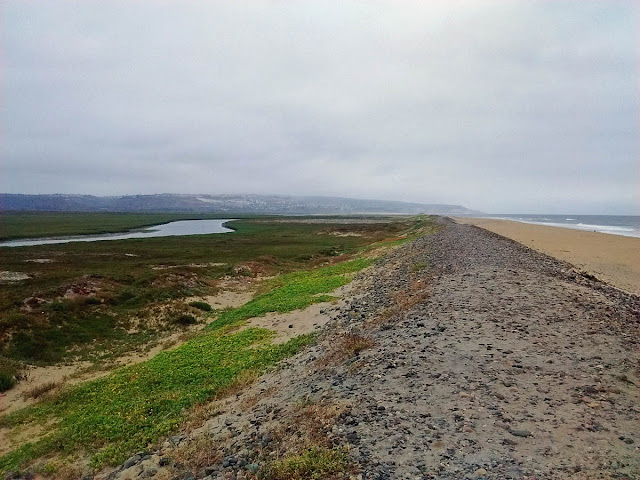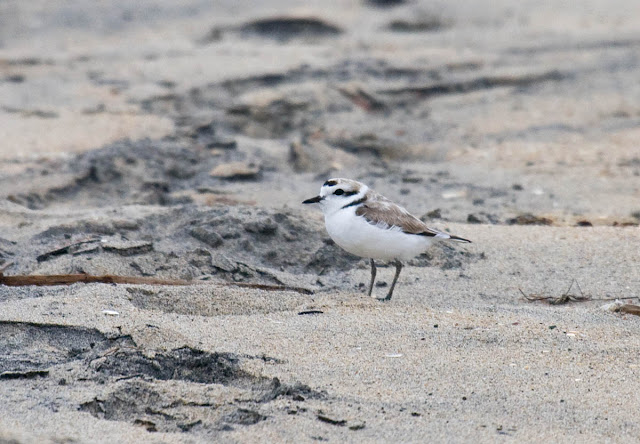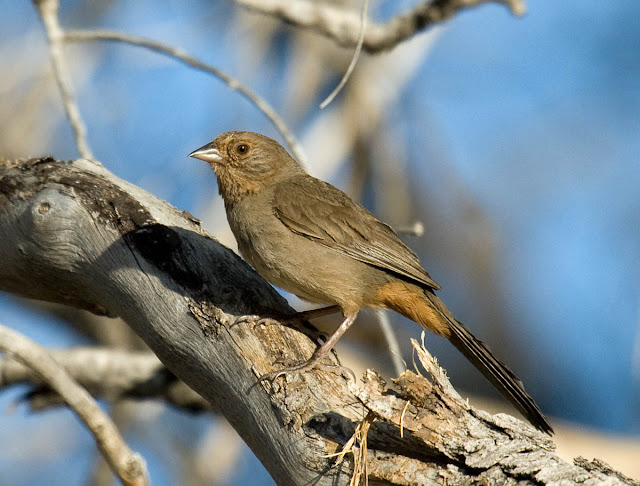So, in July, the Checklist Committee of the American Ornithologist's Union made its annual update to their "
Check-list of North American Birds." This is the official body for naming birds in North America and is responsible for the names and order of birds in your birding field guide. One recent major change was to split the Leach's Storm-Petrel into 3 species, now named: Leach's, Ainley's, and Townsend's storm-petrels.
 |
| Townsend's Storm-Petrel. About 70 miles due west of San Diego, California. November 2, 2008. Greg Gillson. |
Are you planning a pelagic birding trip from San Diego to search for these species? Let me help you.
Everything here is based on the references below. I've tried to simplify and summarize all the material.
First of all, you'll be happy to know that the birds you will see in the US are all illustrated in your most-recent favorite field guides:
The Sibley Guide to Birds (Second Edition). 2014. David Allen Sibley. Alfred A. Knopf. New York.
National Geographic Field Guide to the Birds of North America (Sixth Edition). 2011. Jon L. Dunn and Jonathan Alderfer. National Geographic. Washington, D.C.
The identification of these birds is thoroughly covered in:
Petrels, Albatrosses & Storm-Petrels of North America: A Photographic Guide. 2012. Steve N. G. Howell. Princeton University Press. New Jersey.
The chapters of the above book were taken nearly verbatim from an article in the magazine
North American Birds, Volume 63 (2009) Number 4, pp 540-549. The article is "
Occurrence and Identification of the Leach's Storm-Petrel (Oceanodroma leucorhoa
) Complex off southern California," written by Steven N. G. Howell
et al.
Here is a web link to a pdf file of that article:
http://www.socalbirding.com/images/NAB_63-4_Leach_s_Storm_Petrel.pdf
As you can see, these "new" birds aren't really all that new. In fact, David Ainley published his research on the variation of Leach's Storm-Petrels back in the 1980's. Among other things he noted that there was both a summer-breeding and winter breeding type of Leach's Storm-Petrel on Guadalupe Island, Mexico. Besides breeding at different times of the year on the same island they had a different "song" that was also quite different from other Leach's Storm-Petrels breeding to the north. Well, if they occur together and don't breed, and have a different song, then that meets the definition of a distinct species. Even though we "knew" that different species must be involved, it took some time to study all the populations and for the study to be published, before the AOU would act to officially recognize the new species.
 |
| Leach's Storm-Petrel. 60 miles west of Newport, Oregon. August 2, 2013. Greg Gillson. |
Now that the new species is recognized and you can mark it on your bird checklist, how do you find them and what do they look like? First, let's discuss their range and seasonal occurrence.
Leach's Storm-Petrel (Oceanodroma leucorhoa): At least two white-rumped northern subspecies of Leach's Storm-Petrel. Breeds in the Pacific Ocean from Japan to the Aleutian Islands to off San Francisco. From San Francisco to Mexico, breeding Leach's Storm-Petrels
seem to gradually change from predominately lighter rumped to darker-rumped. Also breeds in the Atlantic Ocean from Labrador to Massachusetts, Iceland. Winters to Midway and the Galapagos in the Pacific, and to the equator and South Africa in the Atlantic.
Off southern California: April-October.
Chapman's Storm-Petrel (Oceanodroma leucorhoa chapmani): Not a separate species, but a dark-rumped southern subspecies of Leach's Storm-Petrel. Breeds off Baja California and occurs regularly north to about San Barbara.
Off southern California: April-October.
Townsend's Storm-Petrel (Oceanodroma socorroensis): A newly minted species, smaller and blacker than Leach's, with an extensive white rump. Breeds in the summer on Guadalupe Island off Baja California and ranges to Santa Barbara in the fall.
Off southern California: July-October.
Ainley's Storm-Petrel (Oceanodroma cheimomnestes): A recently described species with a dusky rump. Breeds in winter on Guadalupe Island off Baja California and ranges south farther into Mexican waters. Not likely to occur in US waters, but if it did it would be difficult to tell from Chapman's form of Leach's Storm-Petrel.
Off southern California: Not discovered yet.
Identifying Storm-Petrels in Southern California
From Alaska to Oregon there are only two species expected--Leach's and
Fork-tailed. But in southern California waters there are 4-6 species
expected on every spring or fall trip. A pelagic trip from San Diego from May-October is most likely to find Black Storm-Petrels, sometimes in dense flocks of thousands of birds. A few Ashy Storm-Petrels maybe mixed in. In late fall of warm-water years there may be large flocks of Least Storm-Petrels. A few Leach's Storm-Petrels may be spotted; some of these may be identified as Chapman's or as the northern white-rumped forms, but many will not be further identifiable. Among the rare storm-petrels you may find a spring Fork-tailed or summer Wilson's,... or a fall Townsend's Storm-Petrel.
Frankly, watching storm-petrels can be frustrating. They are perhaps most like a mixed flock of swallows flitting across the waves, constantly changing directions and fleeing from the boat and any gulls. They hide behind the swell and appear as black silhouettes against the harsh reflected light off the waves. They are best initially identified by flight-style, and finally confirmed by a series of photographs. [See
West Coast Storm-Petrel Flight Style Identification]
In general, the
Leach's-type storm-petrels (Leach's, Chapman's, Ainely's, Townsend's) are different from all other West Coast storm-petrels in the following ways. They hold their pointed wings forward at the wrist, often held above the horizontal, and have a strong bounding flight with their flapping rather deep and jerky--very like a Common Nighthawk. The tail is obviously forked and the pale carpal bar on the upper wing is obvious and reaches the leading edge of the wing. [Black Storm-Petrels are darker, with long wings and deep languid flapping. Ashy Storm-Petrels are over-all paler with shallow, rapid flapping on straighter wings, and direct but twisting flight. Wilson's has obvious white rump and undertail coverts, shorter wings, short square tail, long legs trailing, and swooping flight like Barn Swallow over a pond. Least are tiny, tailless appearing, with rapid deep wing strokes and direct flight.]
Leach's Storm-Petrels are brownish-black, larger with longer, more pointed wings, and a grayish head and back. The brownish upper wing has an obvious contrasting pale cream-colored bar from the body to the leading edge of the wing near the bend of the wing. Typical northern birds have long white rumps divided by a thin line. The center dividing line is gradually wider to the south.
The southern
Chapman's subspecies of Leach's Storm-Petrels have a variable amount of dark smudging on the rump; most birds have significantly more dark than light on the rumps, and the light may be on the sides of the rump. Many birds seem intermediate with northern Leach's. They are slightly smaller than the northern white-rumped Leach's, with slightly more rounded wing tips.
At this time there doesn't seem to be a reliable way to tell
Ainley's Storm-Petrels from Chapman's in the field. We'll just say they don't occur in US waters, so you don't have to worry about it in southern California. Ainley's has a shallower notch in the tail and the middle of the rump is white--opposite of Chapman's. Some at-sea research off Baja is definitely needed.
Townsend's Storm-Petrels are definitely smaller and blacker than Leach's Storm-Petrels. The rump is often entirely white (though some are dark-rumped); the white wraps around onto the sides of the under tail coverts. Wings are shorter and more rounded at the tip. The pale upper carpal bar on the wing is not as obvious and contrasting as on Leach's or Chapman's.
